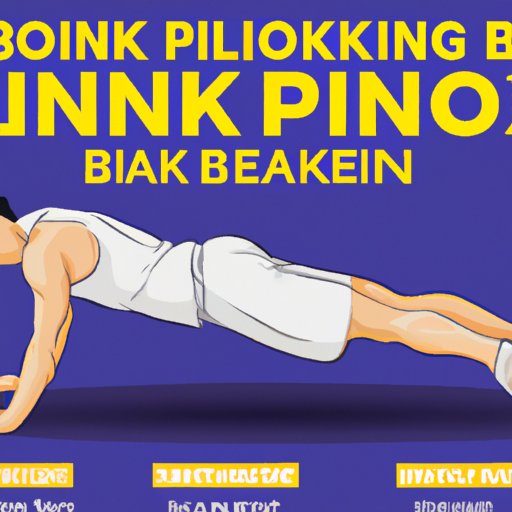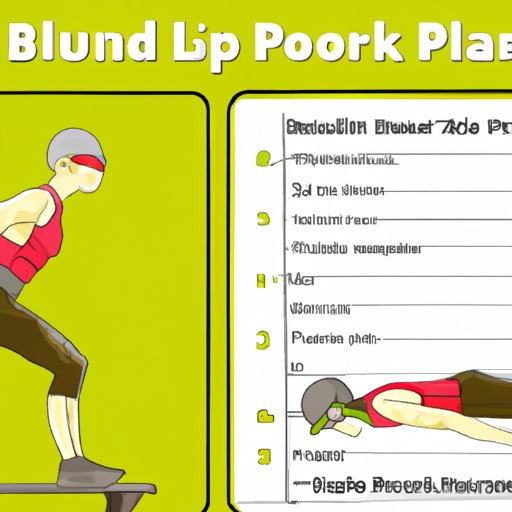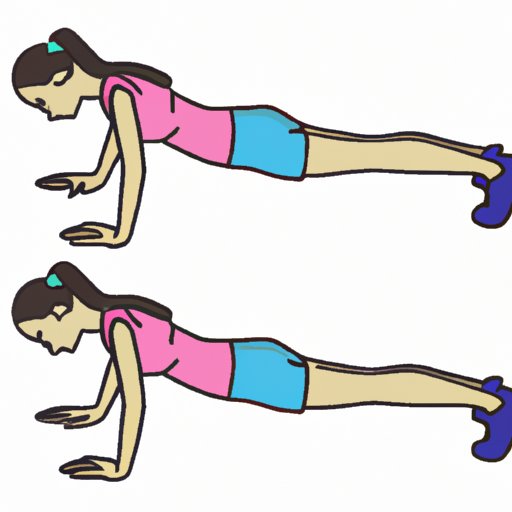Introduction
Planking is a type of exercise that involves holding your body in a straight line while resting your forearms and toes on the ground. It is a simple but effective way to strengthen your core and other muscles in your arms and legs. Planking can provide a range of benefits from improving posture to reducing stress and increasing flexibility. In this article, we will explore the benefits of planking and which muscles are worked out when you plank.

Exploring the Benefits of Planking: A Comprehensive Guide to Which Muscles Are Strengthened
Planking works out a variety of muscles in your core, arms, and legs. Let’s take a look at each of these muscle groups and how they are strengthened when you plank.
Core Muscles
The core muscles are the muscles in your abdomen and lower back. These muscles are essential for maintaining good posture and balance. When you plank, these muscles are activated and strengthened, helping to improve your overall strength and stability. Here are some of the core muscles that are targeted when you plank:
- Abdominals: Planking engages your abdominal muscles, which help to support your spine and protect your organs.
- Obliques: Your obliques are the muscles on the sides of your abdomen and are important for stabilizing your torso. Planking helps to strengthen them.
- Back Muscles: Planking also targets your back muscles, including your erector spinae, which runs along your spine. This helps to improve your posture and reduce back pain.
Arms and Legs
In addition to targeting your core muscles, planking also works out your arms and legs. Here are some of the muscles that are strengthened when you plank:
- Shoulders: Planking helps to strengthen your shoulder muscles, which are important for stability and mobility.
- Triceps: The triceps are the muscles in the back of your upper arm. Planking helps to tone and strengthen them.
- Glutes: Planking engages your glutes, or butt muscles, which help to stabilize your hips and keep your body in alignment.
- Hamstrings: The hamstrings are the muscles in the back of your thighs. Planking helps to strengthen them.
- Quads: The quadriceps are the muscles in the front of your thighs. Planking helps to strengthen these muscles.
The Plank: A Quick and Effective Exercise for Working Out Multiple Muscle Groups
The plank is an easy and effective exercise for strengthening multiple muscle groups. To perform a plank, start by lying on your stomach with your elbows bent and your palms flat on the floor. Then, push up onto your toes and forearms, making sure to keep your body in a straight line. Hold this position for 30-60 seconds, then rest for a few seconds before repeating. You can also do variations of the plank, such as side planks and reverse planks, which target different muscles in your body.
5 Reasons to Start Doing Planks Today: Strengthen Your Arms, Legs, and Core
There are many benefits to adding planks to your fitness routine. Here are five reasons why you should start planking today:
- Improve Posture: Planking strengthens your core and back muscles, which helps to improve your posture and prevent back pain.
- Reduce Stress: Planking can help to reduce stress levels by activating the parasympathetic nervous system, which helps to relax the body.
- Increase Flexibility: Planking helps to stretch and lengthen your muscles, which can increase your range of motion and improve your flexibility.
- Build Stamina: Planking is an aerobic exercise that helps to build endurance and stamina.
- Enhance Balance: Planking helps to strengthen your core and leg muscles, which can improve your balance and coordination.

Maximize Your Plank Routine: Learn the Best Way to Isolate and Strengthen Specific Muscles
If you want to maximize your plank routine, you can focus on isolating and strengthening specific muscle groups. Here are some tips for isolating your core muscles and arm and leg muscles:
Isolating Core Muscles
To isolate your core muscles, try performing a plank with your feet on a stability ball or by raising one arm or leg off the ground. Here are some of the core muscles that you can target with these variations:
- Upper Abs: Try lifting one arm or leg off the ground while in a plank position.
- Lower Abs: Place your feet on a stability ball and hold a plank. This will engage your lower abs.
- Obliques: Try performing a side plank to target your oblique muscles.
- Back Muscles: Perform a reverse plank to target your back muscles.
Isolating Arm and Leg Muscles
You can also target your arm and leg muscles by varying the position of your hands and feet. Here are some of the muscles that you can target with these variations:
- Shoulders: Try placing your hands in a wider position while in a plank position.
- Triceps: Place your hands in a narrower position while in a plank position.
- Glutes: Place your feet in a wider position while in a plank position.
- Hamstrings: Place your feet in a narrower position while in a plank position.
- Quads: Try performing a plank with your feet on a stability ball.
Conclusion
Planking is an effective and efficient exercise for working out multiple muscle groups. It can help to strengthen your core, arms, and legs, as well as improve your posture, reduce stress, increase flexibility, build stamina, and enhance balance. By varying the position of your hands and feet, you can isolate and target specific muscle groups.
(Note: Is this article not meeting your expectations? Do you have knowledge or insights to share? Unlock new opportunities and expand your reach by joining our authors team. Click Registration to join us and share your expertise with our readers.)
